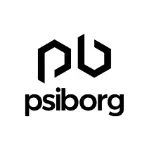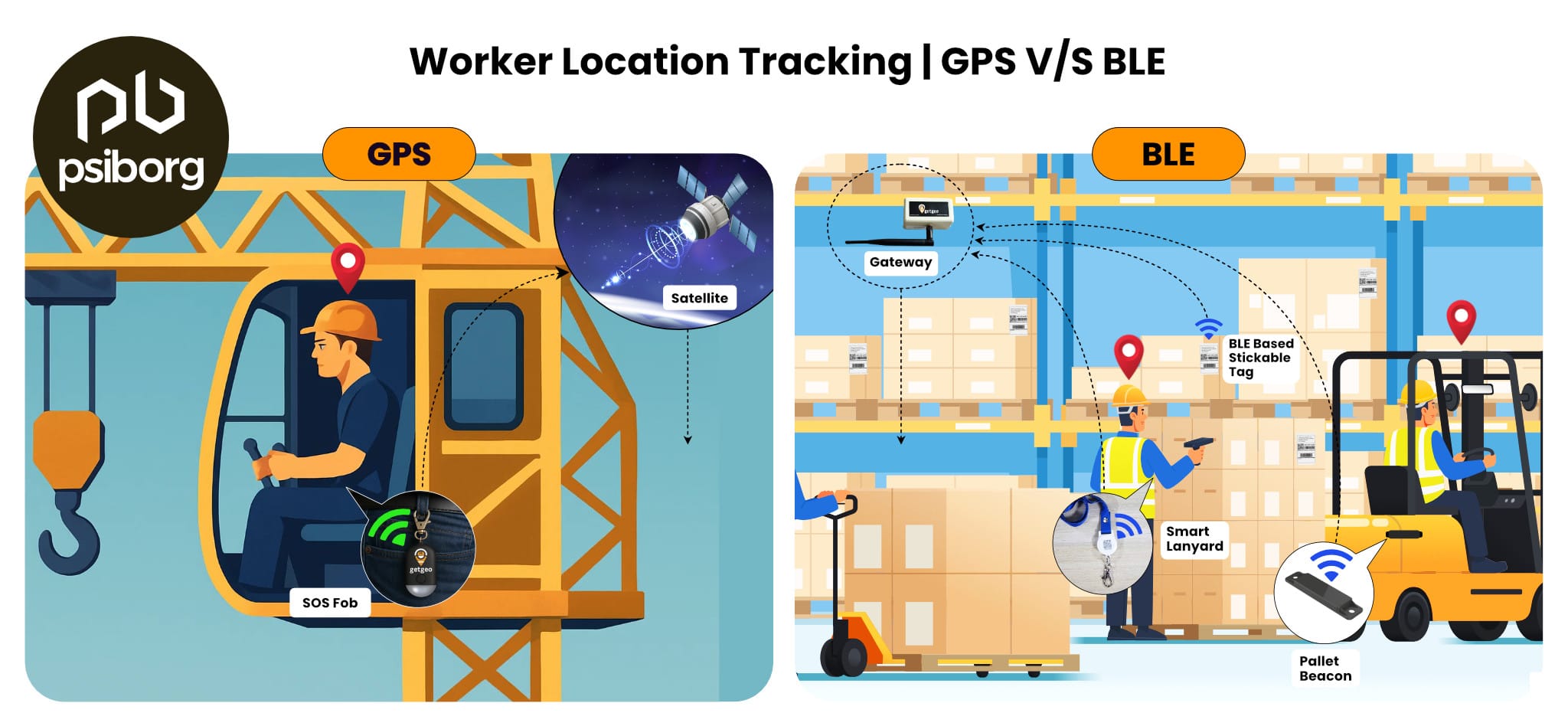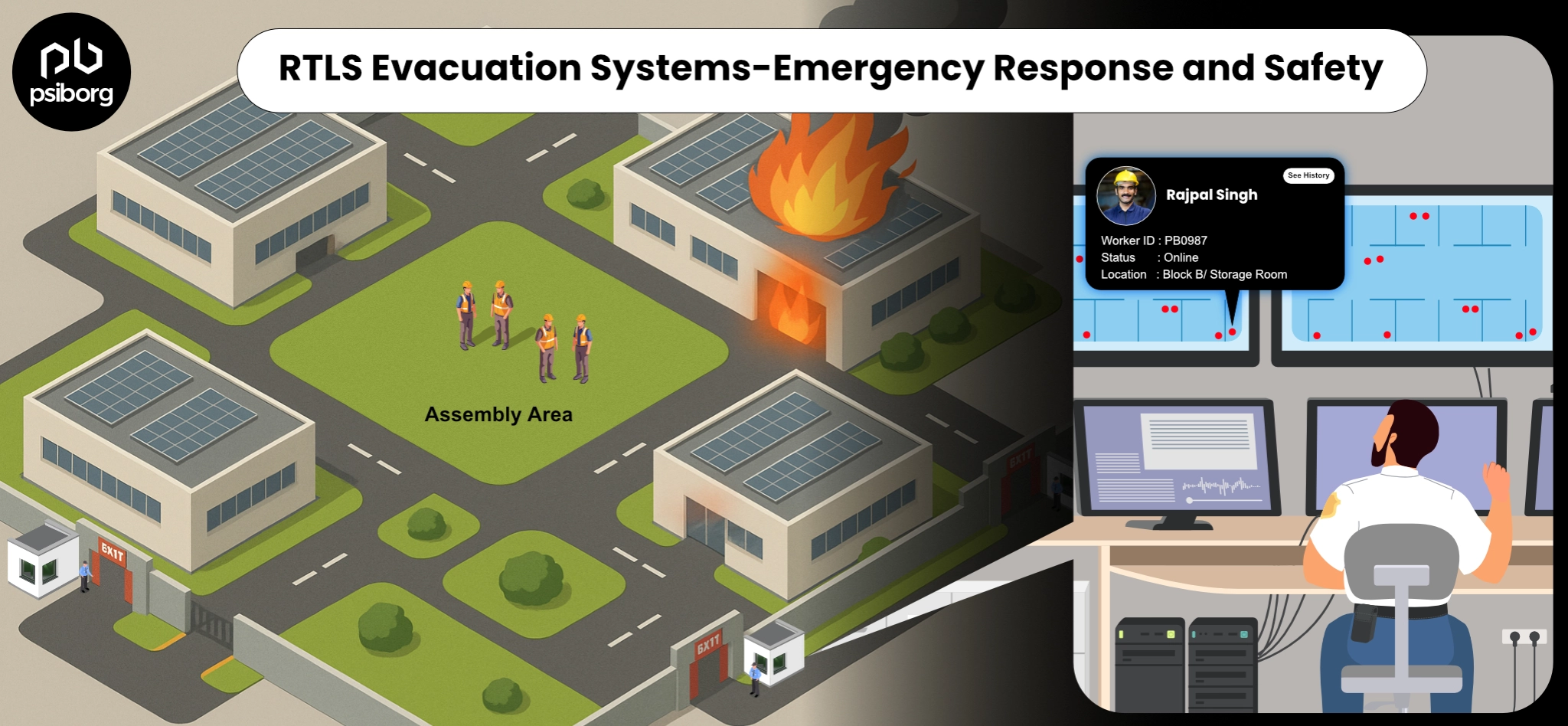Wouldn’t it be amazing if factory machines could tell when they need maintenance, we get live inventory level updates and the entire production process can be seen on a screen? Imagine everything getting done by itself; human intervention. This isn’t the future but is already happening with IoT in the manufacturing industry.
The IoT is transforming how manufacturers operate and help reduce downtime to improve product quality and Industrial IoT in manufacturing is making production smarter, faster, and more connected. Let’s take you through how IoT is being used in the manufacturing world and how your factory can make the most of it.
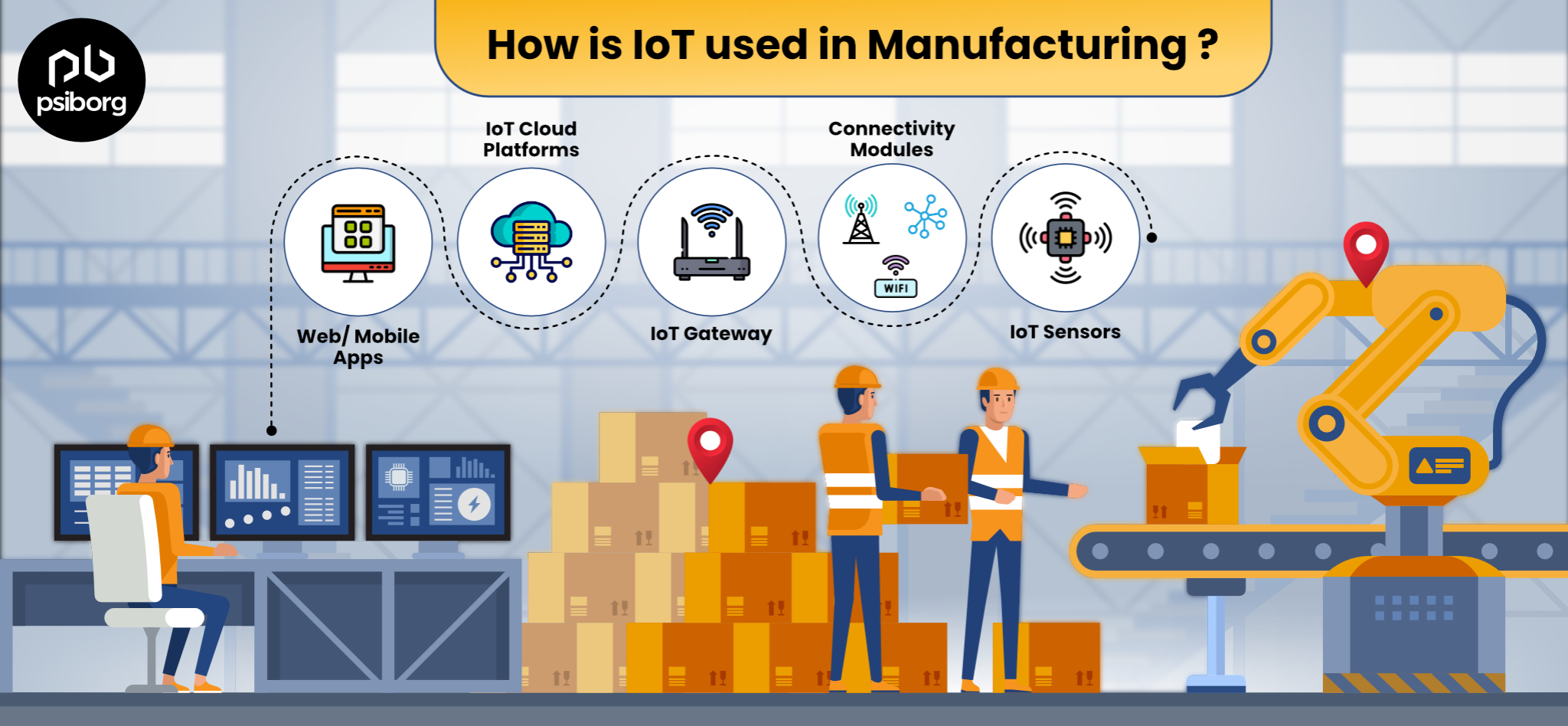
IoT in Manufacturing
When we talk of IoT in the manufacturing industry, it’s basically a network of devices, sensors, machines and systems that are connected together. Being embedded in various equipment on the shop floor inside the facility, they collect and share real-time data across the production environment and help with seamless communication and exchange of data.
At the core level, Industrial IoT in manufacturing gives companies a clearer visibility into operations so they can make better decisions. IoT is very different from traditional automation because not only it performs tasks but also gathers useful insights.
IoT helps manufacturers in:
- Monitoring machine health and performance at all times
- Detecting abnormalities before they cause major breakdowns
- Optimizing the usage of energy and reducing waste
- Allowing live tracking of goods and raw materials
- Improving overall safety and compliance with the rules
IoT solutions for manufacturing integrate smart sensors, cloud platforms, edge computing and data analytics that help build a “smart factory” that is highly efficient. The Internet of Things in manufacturing industry goes beyond connecting machines and changes how the entire ecosystem works.
MANUFACTURING INDUSTRY + IOT = INDUSTRIAL IOT (IIOT)
IoT is present all around us; all the interconnected devices, wearable watches, smart speakers, and smart TVs are all examples of IoT.
Manufacturing industries are adopting this digital interconnectivity and are applying it to their manufacturing operations. Some IoT in manufacturing industry examples are ground-level facility management, staff management, machinery monitoring, and much more.
However, the use of IoT in manufacturing industry is referred to as Industrial IoT (IIoT). And yes, Industrial Internet of Things (IIoT) and IoT are two different things. IIoT is just a part of IoT. IoT is a user-centric concept, while IIoT focuses on supply chain, manufacturing, and management.
So, IIoT uses several digital tools to connect devices, data, and big machines in factories to increase productivity and improve quality.
In recent years, the use of IIoT in the manufacturing industry has increased twofold, as it’s making factories safer for ground zero level workers, and yes, it has also helped businesses save millions of dollars.
According to the statistics:
The IoT manufacturing solutions market size will grow from $33.2 billion to $53.8 billion by the year 2025 at a CAGR of 10.1%.
- According to a report by PwC, 90% of manufacturers feel that integrating IoT into their production processes will bring long-term benefits.
- 35% of manufacturers collect and use data collected from smart sensors to improve the manufacturing process.
- 58% of manufacturers believe that the IoT will transform all industrial operations for the better.
So, this swing towards Industry 4.0 has brought noticeable changes to the manufacturing industry. Even the manufacturers are eager to adopt smart manufacturing techniques to move to a new level of success.
Benefits of IoT in Manufacturing
Adopting IoT solutions for manufacturing brings these top benefits for manufacturers:
1. Predictive and historical Analysis
The installed IoT sensors on machines can monitor indicators like vibrations, temperature, etc. and if anything seems off, alerts are sent on the spot. This helps in scheduling maintenance way before a breakdown can happen thereby saving time and money. IoT based predictive maintenance, integrated with AI can help reducing maintenance costs to great extent.
2. Higher Operational Efficiency
IoT helps fetch data in real time from machines, production lines and equipment that is used to improve workflows. Manufacturers can achieve faster processes, lower operational costs and enhanced overall efficiency.
3. Improved Product Quality
Smart sensors keep tracking quality parameters at all production stages. If they see any deviation from the standard, it immediately gets flagged. When there are fewer defective products, there’s higher customer satisfaction.
4. Inventory Management in Real Time
With IoT in place, supervisors can automatically track raw materials, parts, and finished goods. This helps with accurate records and timely reordering and avoids shortages as well as overstock.
5. Machine to machine communication
Thanks to IoT, machines can independently communicate with each other. A production machine can signal the packaging machine to get ready for the new batch, for example. Now, this seamless M2M communication minimizes delays and makes manufacturing units more synched.
6. Energy Efficiency
IoT also helps keep a check on the overall energy consumed in the facilities. When they are able to identify inefficiencies, it becomes easier for them to cut down on usage and costs.
IoT Use Cases in Manufacturing
Now that we are familiar with the benefits of introducing IoT in the manufacturing industry, let’s look at some exciting applications of IoT solutions:
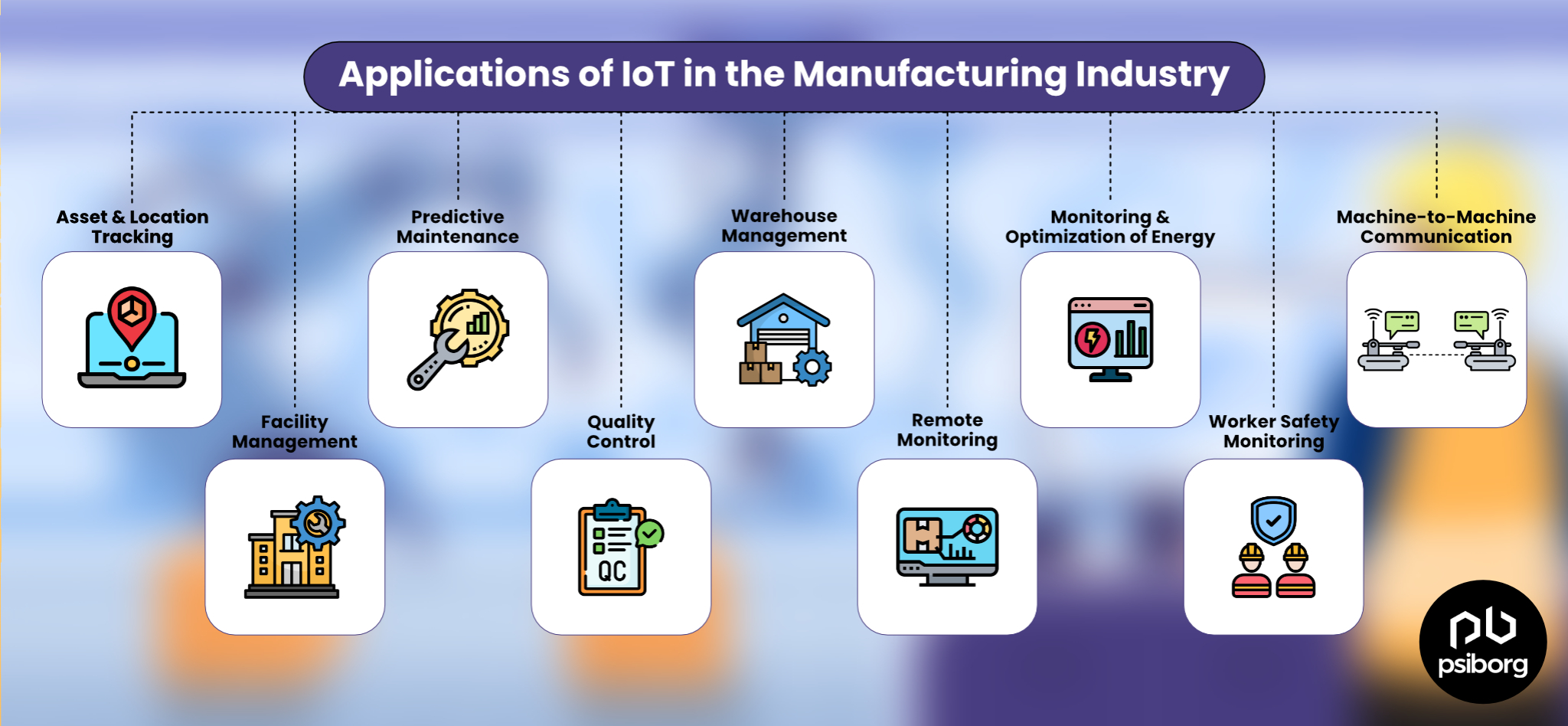
1. Asset and Location Tracking
With an IoT-based asset tracking system, you can track and locate manufacturing products and deliverables in real-time. With an IoT system, the team can track all the goods in the supply chain to be updated about any possible damages to the goods.
2. Facility Management
The sensors connected to the IoT can monitor and manage the environmental conditions of the floor. They can detect factors that can potentially block factory operations and know when a fault occurs. Managers can constantly get insights into the performance of the machines.
3. Heavy Equipment Monitoring
Maintenance teams can use IoT-based software to schedule and plan regular inspections by tracking repair history, planning and scheduling routine inspections, and collecting data on working and environmental conditions.
Additionally, these solutions can integrate with equipment tracking to track where equipment is, how much it’s being used, and its movement.
4. Warehouse Management
Integrating IoT technology into warehouse management is very useful for manufacturers as they can provide faster and quicker deliveries of their products across locations. They gain supply chain transparency, prevent product damage and waste, and strengthen their inventory management system.
5. Remote Production Monitoring
IoT supports live remote monitoring of manufacturing processes. Supervisors can access dashboards remotely to learn about the production status, performance of machines and workforce activities. This helps make decisions faster and operations smoother throughout.
6. Monitoring and Optimization of Energy
Smart energy meters and IoT sensors make it efficient to track electricity usage across various machines and work zones. Companies can easily identify energy-hungry areas that use the most energy and can cut down serious energy costs. Savings and sustainability together!
7. Monitoring of Worker Safety and Compliance
Managers can track workers’ locations with wearable IoT devices and ensure they are not in unsafe conditions. Supervisors can get real-time alerts of mishaps or if workers are overexposed to dangerous situations. That’s how companies can maintain workplace safety and maintain records.
IoT Solutions for Manufacturing
Manufacturers looking to adopt IoT need a complete manufacturing IoT platform that can connect devices, collect data and then turn that data into useful insights. Here’s what’s included in a strong IoT solution for manufacturing:
- IoT Sensors: They are present to capture data from machines, workers and the environments.
- Connectivity Modules: Ensure a smooth transfer of data over Wi-Fi, cellular or LPWAN.
- IoT Gateway: Does the local processing of data before it’s finally sent to the cloud.
- IoT Cloud Platforms: They store, study and view the given data in user-friendly dashboards.
- Mobile and Web Apps: Help with real-time alerts and remote monitoring and controlling.
All of these components make up the backbone of internet of things in manufacturing industry.
Join the Future of IoT in Manufacturing with PsiBorg
Our team at PsiBorg specializes in business-specific customized IoT solutions for the manufacturing industry. Whether you’re just starting your digital shift or want to level up your current systems, you can count on our manufacturing IoT platform for reliable and scalable ready solutions. We’ll help you connect your machines, automate operations and make data-based decisions. Unlock the true potential of industrial IoT in manufacturing with us and make your factory smarter!
FAQ
In manufacturing, IoT connects machines, sensors and systems in a way that you can collect and monitor real-time data. Processes are automated, efficiency is improved and insights are received for better decision across departments.
They in monitoring the performance of the machines and detect if there are any signs of failures or overloads. Hence, maintenance teams can quickly act before any damage happens. This is how unexpected interruptions can be avoided and operational efficiency is maintained.
IoT sensors collect various data from the machinery. Information about temperature, usage patterns etc. is used by advanced analytics to predict when a component is likely to fail. Based on this, manufacturers can schedule timely maintenance and avoid costly problems from arising.
In factories where there are IoT and smart sensors, faults in equipment can be detected, environmental conditions can be monitored and assets can be tracked. In fact, they make sure there’s no compromise with quality and issues around inefficiency, waste, safety risks etc are solved.
Through wearables and sensors, the health and location of the workers can be tracked in real time. It helps to know if they are being exposed to hazardous conditions and if yes, alerts are sent to the support managers. That’s how it improves response time and safety at work.
Among the many benefits that IoT brings to manufacturing are predictive maintenance, improved quality control, inventory tracking in real time, better management of energy and higher worker safety which ultimately increases efficiency and reduces costs.
IoT gives benefits to all sizes of businesses. Small and medium-sized businesses can achieve a new level of productivity with IoT solutions. SMEs can use IoT devices, sensors, and actuators to automate, manage, and monitor plenty of business operations. Real-time remote monitoring, asset tracking, and inventory management are some areas where SMEs can switch to IoT to achieve success in their businesses.
